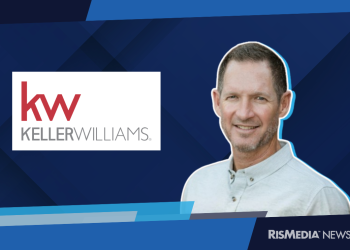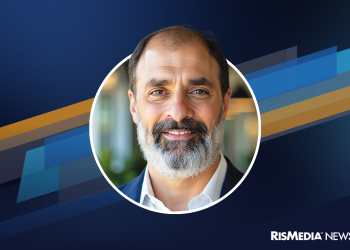Home affordability continues to stand between prospective homeowners and their dreams as home prices and mortgage rates stay higher for longer.
To help buyers overcome these hurdles, some financial firms offer outside-the-box solutions for cash-strapped Americans to qualify for a home loan.
Student loan debt is a common obstacle for first-time and some repeat homebuyers. That’s because their debt-to-income (DTI) ratio—a key factor lenders evaluate to determine borrowers’ ability to repay their home loan—is pushed to the edge by their student debt.
The average federal student loan debt in the U.S. is $37,853 per borrower; the total average balance balloons to $40,681 with private student loan debt included, according to the latest data from the Education Data Initiative (EDI). Americans currently carry more than $1.7 trillion in total student loan debt as of Q1 2024, the second-largest category of debt behind mortgages, a separate EDI study found.
To help potential homebuyers overcome this barrier, two financial technology firms, CampusDoor and LoanSense, have partnered to identify and help an estimated 17 million potential homebuyers who are currently renting and managing student loan debt.
The joint initiative, announced in early November at the Mortgage Bankers Association Annual Convention and Expo in Denver, partners with participating lenders to comb their client data for potential borrowers who might benefit from refinancing their federal or private student loans. The goal: To reduce their monthly student loan payments and lower their DTI ratio enough to get approved for a mortgage they wouldn’t qualify for otherwise.
“The traditional path to homeownership is broken for millions of Americans,” said Sara Parrish, president of CampusDoor. “We need to rethink how we qualify borrowers who are otherwise creditworthy.”
Early results show the program helps approve approximately five more loans per 100 borrowers. LoanSense’s student loan refinancing has helped those borrowers reduce their payments by an average of $350 to $650, helping raise average homebuying budgets by as much as $50,000 to $80,000.
That bump in buying power helps potential buyers qualify for more house and makes their student loan repayments more manageable, said Cat Kaiyoorawongs, founder and CEO of LoanSense.
“Almost 40% of the primary purchase market has student debt, so it’s a huge problem,” Kaiyoorawongs said.
Kaiyoorawongs added that it’s also a growing issue for parents who take out federal Parent PLUS loans to put their adult children through college. Their student debt load can prevent parents from qualifying for a primary home refinance or a mortgage for a second home or investment property.
The program alerts loan officers to borrowers who’d benefit from refinancing their student loans and provides automated marketing support to communicate with the borrowers.
Some lenders participating in the initiative say it’s already paying off. Janine Kempfer, founder and CEO of Keystone Mortgage Academy in Denver, said that off the bat, the platform identified three of her borrowers who’d benefit from restructuring their student loans.
“We’re moving forward with those three buyers now and getting them pre-approved so they can go out (home) shopping,” Kempfer said. She added that if more loan officers and even REALTORS® knew about this solution for homebuyers with student loan debt, it would be a “game-changer.”
“Being able to put people at ease about the total cost of homeownership is huge,” Kempfer said. “The way this helps is because the LoanSense program isn’t just to get qualified for mortgage; it’s a long-term solution. To be able to communicate that with people who may be on the fence is remarkable.”
National down payment assistance program aimed at ‘long-term homeownership success’
While student debt is a common barrier to buying a home, having enough cash for a down payment and closing costs, especially for first-time buyers, is another oft-cited roadblock.
The data illustrates the struggle, with 38% of homebuyers between the ages of 25 and 33 reporting that saving for a down payment is their biggest challenge in buying a home, according to a recent study from the National Association of REALTORS® (NAR).
First-time buyers put a median down payment of 9% on their homes—the highest amount since 1997, according to NAR’s 2024 Profile of Home Buyers and Sellers. They mostly rely on their personal savings (69%) for the down payment and closing costs, but one in four (25%) said they used loans or gifts from friends and family while 21% used other financial assets (such as a retirement account, for instance) to fund their down payments, NAR reported.
Tapping into a 401k account or taking out a loan isn’t an ideal way to pay the upfront costs of buying a home. But with rents increasing, mortgage rates still hovering around 7% and average home prices reaching $407,200 in October, up 4% year-over-year, according to NAR, the goalposts for the amount buyers need to save keep shifting.
That’s why CBC Mortgage Agency created the Chenoa Fund, a down payment assistance (DPA) program that can be used with loans insured by the Federal Housing Administration (FHA). Unlike most DPA programs run by state or local housing agencies or nonprofits, the Chenoa Fund is available nationwide on FHA loans.
To date, the Chenoa Fund has helped more than 48,000 families become homeowners and provides either 3.5% or 5% in down payment and closing cost assistance. FHA borrowers receive the funds as either a forgivable or repayable second mortgage, and they can stack the assistance with other DPA programs.
The agency also provides 18 months of post-purchase counseling through its Borrower Success Program, including monthly check-ins and financial guidance, said Miki Adams, president of CBC Mortgage Agency. This unique aspect of the program helps borrowers stay in their homes and better understand how to budget for and meet their monthly mortgage obligations long term, Adams added.
While DPA programs like the Chenoa Fund tend to benefit communities of color and those earning modest incomes, the assistance extends beyond helping underserved communities, Adams pointed out.
“It’s not just low- or moderate-income borrowers who need help,” Adams told RISMedia. “It’s higher earners, it’s millennials, it’s those who have student loan debt and those who are coming out of college (…) or skilled workers earning above the median area income who don’t have the possibility of saving enough for a down payment in the immediate future.”
Both initiatives—the Chenoa Fund DPA program and the CampusDoor/LoanSense partnership—represent a growing recognition in the industry that traditional lending criteria must evolve to meet borrowers where they are today.












